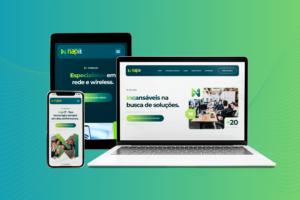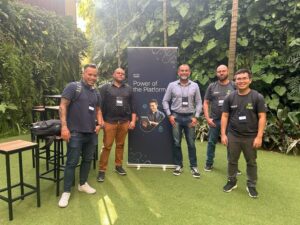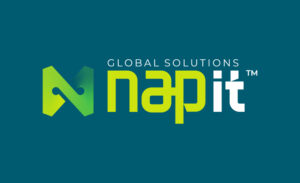In order to reduce costs and modernize its IP telephony systems, Souza Cruz has updated its sites infrastructure. Within this project, Nap IT undertook an intense evaluation in the environment in order to identify the solutions that would be necessary to meet the company objectives. Check out this case study by Cisco Live Magazine!
Souza Cruz, a tobacco company, is in the modernizing process of its telephone system, updating all the infrastructure of its 16 sites in Brazil. The initiative is part of the Be Connected program, to be deployed in all British American Tobacco (BAT) companies, a group of which Souza Cruz is a part, in Latin America and the Caribbean.
“The intention is to reduce the telephony costs from voice over IP, in addition to bringing greater mobility to employees”, explains Matheus Ferreira, IT manager for the company’s Product Center and Global Leaf R&D area. For it, Souza Cruz chose Cisco solutions, which are already being used in BAT offices in other countries, and the integrator Nap IT Network Solutions as a service provider for the project installation and consulting.
First of all, it should be remembered that the company already had experiences with IP telephony. In January 2015, Nap IT carried out a pilot project at the headquarters in Rio de Janeiro, and diagnosed that the infrastructure was hybrid – 70% analog and 30% VoIP. However, the equipment was obsolete and without maintenance support.
After four months of analysis, it was concluded that 12 sites of Souza Cruz needed to update the telephone systems.
From this evaluation, Nap IT began planning the solutions that would be purchased to compose the project. Among the 11 unified communications (UC) software acquired, Cisco Call Manager 10.0, which manages the entire environment including Voice Mail, Instant Messaging, Softphone and Videoconferencing soft and hardphone) over the local network and the Internet (SIP), among other features that facilitate voice and video communication. Cisco VCS Expressway was also purchased to ensure the security of the IP telephony system.
Ferreira comments that Nap IT analysis and planning were fundamental to the project, reducing expenses with unnecessary solutions, as well as avoiding the equipment purchase without planning. “They presented a map of what we already had and what we could have to add benefits, making it easier to acquire new solutions.”
According to Vagner Aguiar, Nap IT telecommunications consultant and manager of the Be Connected Project implementation at Souza Cruz, all system integration ensured zero noise during the project.
Training and new Wi-Fi structure
But despite the planning, the project did not fail to face some obstacles. In the office, the main challenge was some analog lines maintenance to support equipment such as fax and service extensions, including port code and alarm systems. Another point to be overcome was the need to restructure the wireless network (Wi-Fi) to strengthen the signal and provide connectivity to the employees mobile devices.
This step was overcome with the analysis and new switches and access points implementation. But there were still two other challenges: training employees to use the new technology; and make the telephony transition without impact. “We set up a showroom where we carry out the specific training and the implementation assisted by the users”, explains Aguiar.
Telepresence and mobility
According to him, Souza Cruz investment in telepresence was small in this project, since only two SX20 apparatuses were bought for meeting rooms, one installed in the headquarters in Rio de Janeiro and another in the factory in Cachoeirinha (RS). The consultant points out that the 11 video rooms maintained by Souza Cruz in the country needed only adaptations to receive the new systems of videoconference. “The system is still obsolete. There is a project to replace all of these old Cisco SX20s in the first half of 2016”, he said.
Ferreira, from Souza Cruz, confirms that the company was already used to the telepresence use, but it lacked one item: mobility. He also points out that video conferencing rooms are heavily used, which creates difficulty in scheduling meetings. For this reason, telephone sets were purchased with cameras and built-in displays, allowing decision makers (managers and directors) to videoconferencing in their rooms or through their cell phones.
Aguiar says that seven handsets models were purchased, one mobile, totaling 1,400 phones. By the deployment end, the project will have 2,500 equipment. The system already covers more than 700 users in the three locations where the project was delivered – Rio de Janeiro, Product Center, Global Leaf R&D and the
Integrated Distribution Center (CID), in Porto Alegre (RS), Brazil. When completed, some 7,000 employees and third parties will be covered by the new technology.
The Cisco CP-7825 (mobile) phone adoption, for example, also brought an advantage that Ferreira considers strictly necessary for Souza Cruz researchers, who can not count on handsets inside the laboratory. “The laboratories have an antechamber, where all the telephones are located, but sometimes the researcher must enter with the device. So the need for a mobile”, he explains.
Souza Cruz senior managers and managers rely on Cisco Jaber, a smartphone application that allows the cell phone to turn the telephone extension. “In this way, (s)he can only use her/his own mobile device”, comments Ferreira.
The solution also brings convenience to the user, since calls can be made from anywhere. The resource is particularly interesting for the employees responsible for Souza Cruz international relationship, who need to adapt to different time zones.
Reducing costs will pay for technology
In addition to mobility and access ease, Souza Cruz anticipates the return on investment by reducing the international calls cost, as calls will be made through the data network.
In addition, Call Manager can calculate the least cost route by turning long distance calls (DDD) into locations, provided that the call is routed to a region that has a branch office updated with IP telephony.







